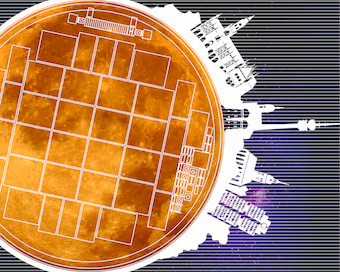Speaker
Description
The CMS experiment at CERN will undergo significant improvements during the so-called Phase-II Upgrade to cope with a 10-fold increase in integrated luminosity with the High Luminosity LHC (HL-LHC) era. Especially the forward calorimetry will suffer from very high radiation levels and intensified pileup in the detectors. Consequently, the CMS collaboration is designing a High Granularity Calorimeter (HGCAL) to replace the existing endcap calorimeters. It features unprecedented transverse and longitudinal segmentation for both electromagnetic (CE-E) and hadronic (CE-H) compartments. This will facilitate particle-flow calorimetry, where the fine structure of showers can be measured and used to enhance pileup rejection and particle identification, whilst still achieving good energy resolution. The CE-E and a large fraction of CE-H will consist of a sandwich structure with silicon as active detector material. The sensors will be of hexagonal shape, maximizing the available 8-inch circular wafer area. Each sensor comprises 192 or 432 individual cells, each of 0.5 - 1 cm^2 in size without any common biasing structure. Biasing of the cells will be performed through the readout chip on the module level, but poses several complications for the electrical characterization of the bare sensors in the laboratory. In this talk, the current status of the detector development is presented, including the different vendors having an 8-inch sensor production available. Moreover, radiation hardness studies and the construction of a dedicated test system to cope with the challenging testing of those sensors will be presented.
